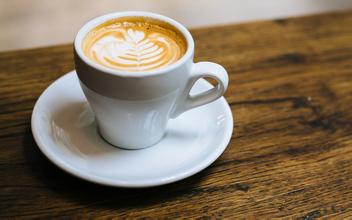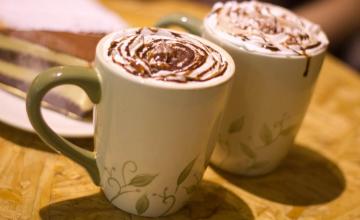Introduction to the flavor and taste of Nicaraguan coffee boutique coffee beans
Columbus arrived here in 1502 and reached the east coast of Nicaragua. In 1522, Spanish colonists began to conquer the region. The cities of Granada and Leon were founded in 1524. From then on, Nicaragua became a Spanish colony and came under the jurisdiction of the Governor's Office of Guatemala. The city of Leon developed into a political and cultural center; Granada became a commercial and agricultural center. In the later period of colonial rule, the economy of the big manor developed to a certain extent, and vegetable cattle, cocoa and indigo became the main products. It was colonized by Spain in 1525. In the middle of the 17th century, Britain occupied the Mosquito coast and declared it a British protectorate. It was not until the signing of the London Agreement with Spain in 1786 that it temporarily withdrew from Augusto in July 1927. Cesar. Sandino led the people in a guerrilla war against the US occupation, forcing the US military to withdraw in 1933. On February 21, 1934, the Commander of the Nicaraguan National Guard, Anastacio. Somocha. Garcia assassinated Sandino at the behest of US President Roosevelt. He became president in 1936 and established a pro-American "Cordillo" dictatorship for more than 40 years until 1979. In 1964, the Sandinista National Liberation Front (SPLF) was established to carry out a revolutionary struggle against the Somocha dictatorship. Managua, the capital of Nicaragua, is located in the west of the border, located on the south bank of Lake Managua, hence its name. The northwest is 140 kilometers away from the Collinto seaport on the Pacific coast. 55 meters above sea level. It is a Spanish city with beautiful scenery. Because it is located on the east side of the Pacific volcanic active seismic belt, there have been four strong earthquakes in the city in the past 100 years, one of which caused the worst damage to the city in December 1972. The rebuilt Managua has taken many important measures in reducing population density, moving large enterprises to other places and improving the earthquake-proof capacity of buildings. The word Managua comes from the Indian Naval language, and its meaning has two interpretations, one is "Mexican place", and the other is "waterside". About 10,000 years ago, there were human activities on the shores of Lake Managua, and the remains of ancient human activities can be seen from the Acorink site. As a result of natural disasters such as earthquakes, residents have moved many times. When the Spaniards conquered Nicaragua in the early 16th century, it was still an important Indian village. It became a city in 1846. It was designated as the capital of the Republic in 1852. From then on, it became the political center of the country.
When tasting Nicaraguan coffee, it is best to drink cold water first, so that you can better feel its mellow taste. Drink coffee while it is hot, because the tannins in Nicaraguan coffee are easy to change during cooling, and the taste becomes sour, which will affect the flavor of the coffee. You can add the right amount of sugar, and then add cream. Enjoying a cup of high-quality Nicaraguan coffee can not only experience the taste of coffee at different levels, but also help to enhance the ability to appreciate coffee. Nicaragua is now one of the poorest countries in Central America. Because of its poor economic foundation, the coffee industry is still relatively backward, while coffee farmers are in extreme poverty. Fortunately, Nicaraguan coffee has received some foreign aid funds to improve the quality of its coffee. The coffee produced in Nicaragua's Madagelba, Sinodega and Segovia is highly respected by coffee lovers all over the world. In particular, the coffee produced in the Madaguelba region tastes very similar to Kenya's AA coffee. Nicaragua is one of the main coffee producing countries, producing high-quality coffee. Even coffee from the Antigua Mountains of Guatemala, which is famous in Asia, imports raw beans to Nicaragua. Nicaraguan coffee is not well-known in Asia. But in fact, Nepalese coffee is already famous all over the world (Starbucks has many cooperative coffee farmers in Nepal), while the coffee quality produced by several coffee producing countries in Central America, such as Guatemala, Costa Rica and Nicaragua, is similar, mainly due to weather conditions, soil fertility, planting height and other conditions.
The cultivation and production of Nepalese coffee has a unique environment, a wide range of fertile volcanic ash soil, and shaded planting methods have established a good production quality. Nepalese coffee has a rich mellow and fragrant taste, moderate acidity and excellent balance of bitterness, which is regarded as top grade in the eyes of international coffee experts.

Important Notice :
前街咖啡 FrontStreet Coffee has moved to new addredd:
FrontStreet Coffee Address: 315,Donghua East Road,GuangZhou
Tel:020 38364473
- Prev

Introduction to the characteristics of the manor producing area with the flavor of Salvadoran coffee
El Salvador's domestic topography is mainly mountainous, plateau, volcanic, known as the country of volcanoes, Santa Ana active volcano 2385 meters above sea level, the highest peak in the country; the northern part of the country is the Lompa Valley and the southern part is the narrow coastal plain. Climatic characteristics all over El Salvador has a tropical climate, with an annual average temperature of 28 ℃; dry season from November to April and rainy season from May to October; coastal and lowland atmosphere
- Next

Brazilian fine coffee with typical iodine flavor Taste Manor Features
In the 1630s Portuguese expeditions were sent to establish colonies in Pakistan. The governor was appointed in 1549. Later, the whole colony was unified along the Atlantic coast under Portugal rule. The French invaded in 1555 and occupied what is now Rio de Janeiro, intending to establish a French colonial stronghold in South America. However, since the French were unable to attract colonists from Europe,
Related
- Detailed explanation of Jadeite planting Land in Panamanian Jadeite Manor introduction to the grading system of Jadeite competitive bidding, Red bid, Green bid and Rose Summer
- Story of Coffee planting in Brenka region of Costa Rica Stonehenge Manor anaerobic heavy honey treatment of flavor mouth
- What's on the barrel of Blue Mountain Coffee beans?
- Can American coffee also pull flowers? How to use hot American style to pull out a good-looking pattern?
- Can you make a cold extract with coffee beans? What is the right proportion for cold-extracted coffee formula?
- Indonesian PWN Gold Mandrine Coffee Origin Features Flavor How to Chong? Mandolin coffee is American.
- A brief introduction to the flavor characteristics of Brazilian yellow bourbon coffee beans
- What is the effect of different water quality on the flavor of cold-extracted coffee? What kind of water is best for brewing coffee?
- Why do you think of Rose Summer whenever you mention Panamanian coffee?
- Introduction to the characteristics of authentic blue mountain coffee bean producing areas? What is the CIB Coffee Authority in Jamaica?

